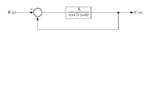highlander11
Junior Member level 3
lets start with what I know about the gain and phase margin:
as my "teacher" told gain margin is :
you take the last zero or pole and messure the distance to zero dB.
phase margin :
you take the last zero or pole and see the difference between his phase and 180 degree.
BUT from what I read its wrong meaning:
gain margin is the difference between the gain in 180 [rad/sec] to 0 dB
and phase margin is the difference between the degree which is 0 dB and 180.
I took it from here :
**broken link removed**
so whats right ?
another question how do I correct phase margin and gain margin ?
sicne in wikipedia its too complicated and I need the easiest way.
here is an example for a simple question :

thanks for any help
as my "teacher" told gain margin is :
you take the last zero or pole and messure the distance to zero dB.
phase margin :
you take the last zero or pole and see the difference between his phase and 180 degree.
BUT from what I read its wrong meaning:
gain margin is the difference between the gain in 180 [rad/sec] to 0 dB
and phase margin is the difference between the degree which is 0 dB and 180.
I took it from here :
**broken link removed**
so whats right ?
another question how do I correct phase margin and gain margin ?
sicne in wikipedia its too complicated and I need the easiest way.
here is an example for a simple question :

thanks for any help